Discovery of the Buckyball at Rice University in 1985 that led to a Nobel Prize for three of the five team members, and ushered in the modern era of nanotechnology, will be recalled by surviving team members October 2 in Dallas, Texas.
Jul 3rd, 2007
Read more
The nanocytometer is a pocket-sized device that can rapidly identify diseases by testing a single drop of blood using an inexpensive disposable cartridge. The cartridges contain a silicon chip laden with artificial nanopores that mimic the filtration system of human cells.
Jul 3rd, 2007
Read more
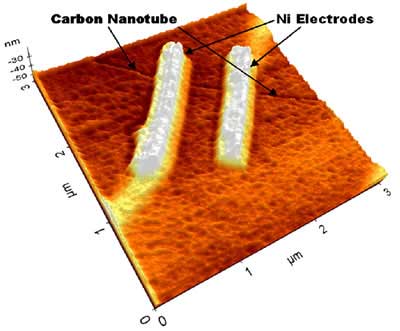 Researchers hope to unlock capabilities of carbon nanotubes.
Researchers hope to unlock capabilities of carbon nanotubes.
Jul 3rd, 2007
Read more
 Controlling the color of very small particles of iron oxide suspended in water simply by applying an external magnetic field to the solution.
Controlling the color of very small particles of iron oxide suspended in water simply by applying an external magnetic field to the solution.
Jul 3rd, 2007
Read more
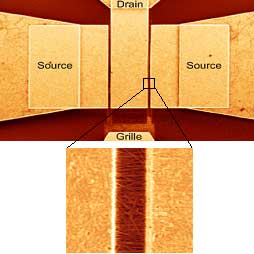 French researchers have succeeded in making transistors from carbon nanotubes on a silicon substrate.
French researchers have succeeded in making transistors from carbon nanotubes on a silicon substrate.
Jul 3rd, 2007
Read more
Science fiction? No. Satire? No. A serious TV news report? Yes!
Jul 3rd, 2007
Read more
To help engineering professionals and organizations benefit from the surge in nanotechnology R&D, Johns Hopkins' Engineering and Applied Science Programs for Professionals offers a Nanotechnology Option within its Master of Materials Science and Engineering program.
Jul 2nd, 2007
Read more
Nanospheres could make production cheaper, faster and less toxic. They could produce a cleaner fuel and a cleaner glycerol co-product. And they could be used in existing biodiesel plants.
Jul 2nd, 2007
Read more
Study suggests nanotube structures hold potential for creating synthetic tissue, muscles.
Jul 2nd, 2007
Read more
Developments in nanotechnology help exploring ways to instill aging tissues and organs with indefinite life.
Jul 2nd, 2007
Read more
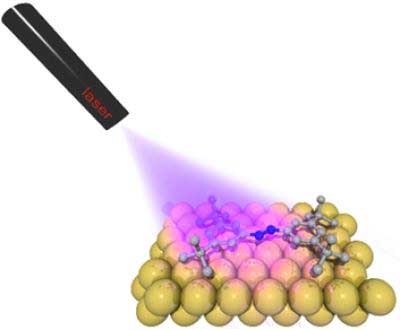 By shining ultraviolet laser light on tiny molecules of azobenzene adhered on a layer of gold, scientists could force the molecules to change shape at will. Potentially, the molecules could be incorporated into nanomachines in the form of remotely controlled switches, pistons or other movable components.
By shining ultraviolet laser light on tiny molecules of azobenzene adhered on a layer of gold, scientists could force the molecules to change shape at will. Potentially, the molecules could be incorporated into nanomachines in the form of remotely controlled switches, pistons or other movable components.
Jul 2nd, 2007
Read more
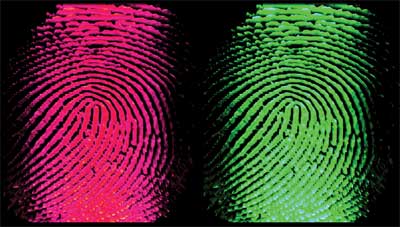 Police could use fingerprints to detect if suspects have handled explosives or cocaine in a process being developed by a UK nanotechnology company.
Police could use fingerprints to detect if suspects have handled explosives or cocaine in a process being developed by a UK nanotechnology company.
Jul 1st, 2007
Read more
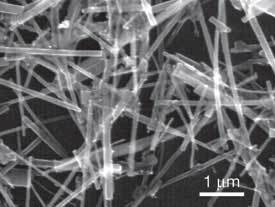 Researchers in the US and Japan have created a nanoscopic 'torch' that shines visible laser light on nanoscale structures, imaging them with high resolution.
Researchers in the US and Japan have created a nanoscopic 'torch' that shines visible laser light on nanoscale structures, imaging them with high resolution.
Jun 29th, 2007
Read more
New pilot scheme to bring European and Australian researchers closer together includes nanotechnology research.
Jun 29th, 2007
Read more
A new report describes nanotechnology applications for civil security.
Jun 29th, 2007
Read more
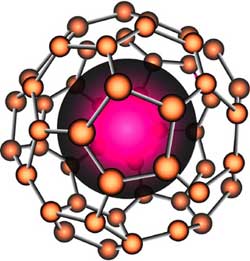 A novel technique for making molecules a thousand times more useful for quantum computing.
A novel technique for making molecules a thousand times more useful for quantum computing.
Jun 29th, 2007
Read more








 Subscribe to our Nanotechnology News feed
Subscribe to our Nanotechnology News feed